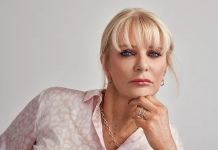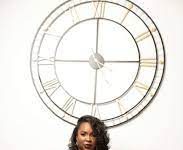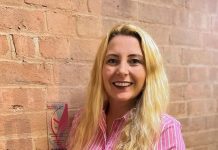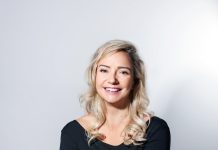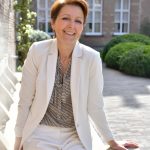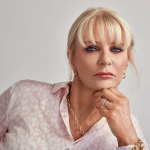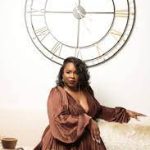Dina made a conscious decision to transition from a traditional scientific career into the world of painting. For Dina, it was a natural choice, as she has always been interested in the arts and the creative process.
Dina firmly believes that her background in physics and mathematical physics has informed her approach to painting and is always keen to explore the ways in which cultural identity and openness can influence her artwork.
Dina believes that the most rewarding aspect of being a painter is the ability to create a sense of openness and limitation in her work. She is constantly exploring new techniques and approaches to create paintings that inspire, challenge, and engage her audience. Dina believes that the most important questions in painting are those that inspire us to think about our place in the Universe and is always keen to explore these big questions in her work.
Painting is an ongoing humbling experience. Many moments are full of doubts and the feeling to trash a work can prevail. The learning never stops — Dina Sioufi
As an impressive academic, what inspired you to transition into your journey in painting? What has been the biggest challenge you’ve faced in your transition?
First of all, thank-you very much for the “impressive academic” description of me. Greatly appreciated. The inspiration came naturally and by chance actually—or by a series of chances…. such is life.
My greatest desire early on was to be a theoretical physicist but somehow, I didn’t manage to get into PhD status. Physics for me was the way for a deeper understanding and connection to the world around us. The alternative as I saw it was the “other” creative mind – that of visual art, music, literature, poetry etc.
These take us on a voyage into different realms; religions, history, myth, the everyday, popular culture beyond borders in time and of geography. One engages with a 17th-Century Dutch painting then a 20th-Century German Expressionist work often within the same space.
One is catapulted into different places/epochs without moving. Same with music, literature etc. Thus began my journey into history of art, Christie’s, Sotheby’s post-grad diploma in fine art and contemporary art across a span of centuries.
It was then via a chance encounter that I was “invited” by the head of the French department Birkbeck to do an MA there to my utter astonishment as I didn’t have the appropriate BA nor had written in French properly! This ended in my actually obtaining the MA with distinction and writing my dissertation – “Staging the Feminine in Balthus and Pierre Klossowski”, 2000, about two of the most fascinating figures of the 20th-Century (painters/Klossowski author and philosopher as well) opening up worlds.
My interdisciplinary PhD followed on even more intellectually and emotionally challenging artists entitled “Hans Bellmer & the Experience of Violence”, 2006.
My next move was to get into academia—unsuccessful. Another was to turn my dissertation based upon the relation of Bellmer and his last companion Unica – who resembled his lethargic doll – into a book.
Due to several circumstances private and other this was shelved. By chance (2010) I came across an ad about a short painting course at the now Royal Drawing School based at the time in Kensington Palace. For me it was an important opportunity to understand how paint works not in order to paint but for my writing about artists.
However, as I started with one course, I found myself a few months later doing another. I then started painting portraits initially, then went on gradually to larger more complex works but not taking myself at all seriously. Even when I had started exhibiting in 2016.
It is only 4 years ago that I realised that this is not only what I want to do and that I am a painter. As for challenges: one challenge is the blank canvas that needs to be transformed into a fragment of the world as I see it, a second challenge is getting my work exhibited and seen more and more.
How has your background in Physics and Mathematical Physics informed your approach to creating art?
Physics and Mathematical Physics open up a way of thinking of the world which is unique with its own language and a profound capacity to analyse reality through experimentation and special investigation. All this resonates with, and in my case enriches, any creative process. Especially art and painting.
The colour pigments and materials used are a science; their drying times vary, adding oil or glaze medium needs expertise, mixing colours — chemistry — too long to go into here.
As for the choice of subject in art, its composition, materials used all need their “physics”; their special thinking, own language, analysis etc.
What are some of the most important lessons you have learned as a painter?
Painting is an ongoing humbling experience. Many moments are full of doubts and the feeling to trash a work can prevail. The learning never stops.
So far, I have learnt that “patience is truly a virtue”; that perseverance is a must; that deep expansive thinking is imperative; that the possibility — let alone the ability — to paint is a miraculous gift. But the lessons aren’t at an end at all…
How have cultural identity and openness influenced your artwork?
Cultural identity and openness are the basis of my work. If one says cultural identity, one is really talking about a multitude of identities — Fernando Pessoa puts it beautifully in his work including “Una sola moltitudine/A Sole Multitude “so does Jacques Derrida, Identity of the Other — I can cite several others.
The fact that one is born into and exposed to a “culture” is a part of each individual. But then the receptiveness to being exposed; to absorbing; adding on other cultures or the refusal depends on each individual.
Openness tends to revolve around absorbing aspects of certain cultures, often subconsciously and through exposure – not necessarily confined to this. Multiplicity of cultural identities makes openness possible. This is what I attempt to express in my work.
What is the most rewarding aspect of being a painter for you?
Apart from the intense pleasure of seeing what lies within me and my capabilities, the happiness in seeing others loving one or more of my paintings and of arousing their curiosity as to what the paintings are about is very rewarding.
This provokes a learning experience both in me and through the spectators as well.
What kind of cultural identity do you explore through your art?
I think answering question 4 in part explains this. I would actually say that what I am trying to express is not a specific cultural identity nor different ones but the complexity of cultural identity.
The fact (Derrida again) that “We do not speak one language; We speak only one language. We do not speak one idiom; We only speak one idiom” is a cultural phenomenon. In other words, we enter into readymade language and a world that itself has become a language via many sources, evolutions, additions, transformations, etc.
This involves different strata of the same society (idem for idiom).
But within the vastness of language we end up choosing our words and crafting our expressions that become our “one” language (irrespective of if we are speaking in different tongues).
The more knowledge and different aspects, different experiences we are exposed to, and absorb, the more complex the cultural identity. So not which but what kind/type of cultural identity — if one can put it thus — am I trying to express is more to the point here.
We could say an “intellectual opera aperta—voyage-into-the-world”-sort of cultural identity if you like.
What techniques do you use to create a sense of openness and limitation in your works?
Usually, I start out with a phrase or title from a poet, musical work, book and look for images as models for my figures. I start out looking for objects to appropriate and use as fragments that I bring together as a sort of collage via painting to allegorically express the effect of the former on me.
Sometimes my imagination is fired by actual images or photos that then need snatching out of their original context — they can often be figures disconnected from different sources — transformed/re-interpreted in my imagined context & expressed through painting.
Creating a sense of limitation is not really a conscious part of my work unless the work is meant to express an inner state that is claustrophobic, or man enclosed in his creative world. In other words, the helplessness of a human condition which I express in several paintings especially my last two: “Wozzek. Se questo è un uomo”, and “The little match-seller”.
This is done generally via a contrast between the vastness of a landscape with the figure overtaking the background in some way. In the case of creative isolation this is usually using a photo-portrait as model for an artist/composer compared with some aspect from their work and locking both in.
Thus, this reinterpretation occurs in my painting to express the isolation of genius with work.
Could you tell us about a painting of yours that best embodies this dialogue between culture?
The main inspiration for this painting is Austrian composer Alban Berg, Wozzek, 1922, based upon Georg Büchner’s drama, Woyzeck. It is about the tragedy and violence of war, as well as the resulting dehumanisation. Wozzek the soldier stabs his love Marie because she is unfaithful while he is gone to war. He then drowns while trying to collect the blood-stained knife when it drops in a pond. This disconnection with one’s humanity that ensues due to the abnormality of being ordered to kill absolute strangers – in war; here turns on itself into the familiar. …it becomes normal to kill — to kill those close-by.
As I painted this the title and words of Italian-Jewish scientist, philosopher and author Primo Levi, Se questo è un uomo (if this is a man), about the degradation and unspeakable atrocities inflicted in Nazi detention camps came to mind. The reduction of man by man. …
Thus, the painting expresses the cultural dialogue between theatre, music, literature, and man’s tragic reality.
The Wozzek-marionette-like broken figure kneeling arms stretched out in desperate resignation is after an Egon Schiele drawing. The background with water and a moon of blood is as described in Berg. The “white” building which could be a church, or an official building symbolises ideology, religion, government that can lead to the catastrophe of man’s idiotic slaughter of man.
The writing below on both sides of the figure are Levi’s title repeated. Hence dialogue between culture here is also via language. German (Büchner’s play)/Austrian (Berg’s opera) in the painting’s title and the Italian writing in painting (Levi’s book).

How has the response to your work been so far?
As I am a late comer into painting and really incapable of marketing my work it has been and is extremely difficult. Impossible almost in the art world without the right connections, and so on. Apart from sporadic portrait-commissions come by luck which I had painted in 2012-14 — including 2 for Saudi princesses, I started my first solo exhibition — again by luck through a good friend — in 2016 Berlin Egyptian Embassy.
Other exhibitions followed but mainly in diplomatic venues which are not the best showplaces for art, especially not the best for selling art. My last exhibition 2022 at The Egyptian Cultural Bureau Mayfair produced a lot of interest, many questions, and so on, and luckily 3 collectors.
This was a tremendous blessing. But really a lot of artists need support in helping them market and sell their work in order to continue. The pandemic didn’t help either …. But the struggle goes on …
Tell us about a target you have for the future? What one target must you hit in the next 5-10 years?
I never think in terms of future targets. All I know is that I want to continue to paint as best I can; try to socialise which isn’t fun for me but a must in order to get my paintings known; I will explore possibilities for my paintings – and leave the rest to the Almighty.



